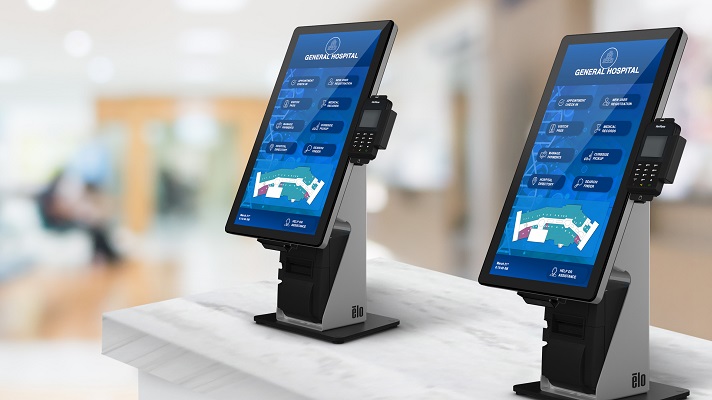Touchscreens: a gateway to patient engagement

Credit: Elo
Touchscreen technology paves the way for patient engagement and provides a unifying interface for greater safety and more operational excellence – two essential aspects of the telehealth revolution. That’s the key message of a new eBook from interactive tech specialist Elo which identifies the benefits of underpinning patient engagement with touchscreen solutions, and offers advice about best practice for achieving patient adoption.
Building on the transformation of patients into ‘healthcare consumers’, Elo notes the increased expectations of health service users who have become well used to an intuitive, streamlined digital experience during retail transactions. They bring these expectations to their healthcare choices – and this can make interactive technology a strategic investment when it comes to improving patient and staff engagement.
Why it matters
“To increase patient engagement, it’s important to connect with patients at key touchpoints prior to their arrival and at the healthcare facility,” explains the company in its eBook. “On the provider’s side, it’s important to implement technology that supports a delivery of care that exceeds customer expectations. From patient registration and nurse stations to medical devices and telehealth, touchscreen solutions streamline administration and enhance the patient experience.”
According to Elo, a self-service touchscreen can be a gateway to both patient engagement and efficiency gains for a healthcare facility. The patient can check in and provide a comprehensive range of pre-consultation information – they can even complete consent and health status forms – while helping the clinic or hospital to carry out initial triage.
For clinicians, these devices can reduce keyboard dependence for EMR access – allowing a nurse to update a patient record on the spot, for example, and making patient handovers more accurate. They also help medical professionals to collaborate around a patient’s record, including fresh test results or radiology reports, whether they are in the ward or the operating theatre. Furthermore, they can provide interactive interfaces for medical devices. And in the pharmacy, they can help prescriptions to be fulfilled and checked more accurately and quickly.
By enabling more streamlined workflows across the facility, touchscreens can free care givers to focus on patient care.
“With interactive technologies supporting capacity management, healthcare organisations can streamline staffing and better plan for patient admissions, discharges and transfers, ensuring future business requirements are met in a cost-effective manner,” Elo suggests.
The bigger picture
Touchscreens can also play an important role in the advancement of telehealth. The concept of the telemedicine cart with its integrated cameras, touch displays and network access, means that geography or location are no longer a barrier to collaboration between clinicians, physicians and specialists.
“Telehealth improves the quality, speed and accessibility of health care, increases efficiency and knowledge exchange, and enhances overall healthcare management,” says Elo. “This way, these solutions speed up treatments by improving the patient’s care process and treatment recommendations.”
On the record
Rick Resnick, CEO of healthcare software solution provider LifeMed ID, said the company has found the use of Elo touchscreen self-service kiosks to be highly productive for healthcare environments.
“Patients are demanding self-service tools as a method of interaction with their healthcare provider at different points in the care journey,” he added. LifeMed ID selected Elo because of their modern, modular platform which enables highly utilised touchpoints to initiate that care journey once inside the healthcare facility.”

























